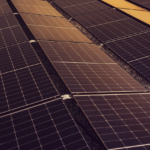
True gluten allergies are extremely rare, manifesting in a syndrome called Celiac Disease and affecting less than 1.4% of the global population.
When someone with Celiac Disease ingests gluten, their immune system attacks their body tissues, causing widespread destruction. So, if you experience only bloating and pain after ingesting gluten, you are intolerant of gluten, not allergic to it.
It’s not life-threatening, but it is an extremely uncomfortable state of affairs that you can only avoid by steering clear of gluten.
If you’ve noticed the above symptoms when ingesting gluten, you’re probably wondering, ‘What can gluten-free people eat?’. Keep reading to find out.
What Is Gluten?
Gluten is a type of protein. It’s found naturally in barley, rye, and wheat.
When you mix the flour from one of these grains with water, the proteins in gluten create a glue-like, sticky network. This gives the resulting dough an elastic texture and the ability to rise during baking.
The result is an appealing chewy texture.
Gluten contains two main proteins namely glutenin and gliadin, gliadin is the culprit when it comes to adverse health effects.
Wheat is the most common gluten-containing grain in modern diets, and it’s easy to see how difficult it is to avoid foods containing wheat. It’s found in bread, pies, pizzas, pasta, and many other common, popular foods.
What Can Gluten-Free People Eat Instead of Wheat Products?
Fortunately, the world has woken up to the reality of life without gluten. So, there are several types of bread, pasta, and other products available in supermarkets, specialty stores, and online that cater to the gluten-free brigade.
You’ll also find restaurants that have amended their menus to include options for gluten-intolerant people. Nowadays, you can get yummy gluten-free New York pizza Ketchum-style with cauliflower crusts, or buy a bun-less burger at most fast-food outlets.
When you buy gluten-free fried foods, be sure to ask if it’s cooked separately. Bread crumbs from regular menu items may contaminate your meal and cause a reaction.
You can still eat products made from almond, buckwheat, sorghum, brown rice, oat, and lentil flour. Some of these items might not indicate that they’re gluten-free upfront, so always check your product labels.
Remember, some over-processed, gluten-free food products aren’t enriched with the minerals and vitamins you need. If your gluten-free diet includes many of these products, you’re at risk of developing deficiencies in niacin, iron, folate, and riboflavin.
It’s much safer to stick to a diet that’s high in nutritious, naturally gluten-free foods.
Naturally Gluten-Free Foods
There are very many alternatives to gluten. So, if you’re not too fussed about dough-based products, you’ll find you can still enjoy a varied and delicious diet without gluten.
These foods include:
Proteins
Although gluten is a protein, most conventional sources of protein don’t contain any gluten. However, manufacturers may use gluten-based products to season or marinate meat products.
Avoid foods with sauces, rubs, and marinades. Rather, make flavoring and tenderizing agents at home, with ingredients you can trust.
The most common gluten-free proteins include:
- Legumes like peas, beans, lentils, and peanuts
- Seeds and nuts
- Fresh beef, lamb, pork, and bison
- Fresh chicken, turkey, and duck
- Fresh fish, scallops, and shellfish
- Soy foods like tempeh, edamame, and tofu
Avoid any breaded meat, poultry, and fish products, or anything produced with wheat-based soy sauce. The vegan protein, Seitan is almost entirely made of gluten.
Whole Grains
Apart from all types of wheat, rye, barley, and triticale, all other whole grains are gluten-free. That means you can eat the following to your heart’s content:
- Amaranth
- Arrowroot
- Brown and wild rice
- Buckwheat
- Millet
- Quinoa
- Sorghum
- Tapioca
- Teff
Oats are also gluten-free, but they’re often processed in factories that handle wheat products. Always ensure you buy gluten-free certified grains.
Fruits and Vegetables
Fruits and vegetables couldn’t contain gluten if they tried. Once again, processed fruit and vegetable might contain traces of gluten or comprise ingredients that contain gluten.
Manufacturers typically use gluten as a thickening agent for canned and frozen vegetables and fruits. Likewise, dried fruits and vegetables might contain gluten-rich ingredients.
Check the labels on fruit and veg products for modified food starch, hydrolyzed wheat protein, and maltodextrin.
Dairy
All dairy products are gluten-free unless they have added flavoring and colorants, like thickeners, modified food starch, and malt.
Milk, butter, ghee, cheese, cream, cottage cheese, yogurt, and sour cream contain no gluten in their natural state. Unfortunately, some ice cream may also contain gluten.
Oils and Spices
Oils and fats are all fine unless they’ve got additives, so you should avoid things like flavored oils and cooking sprays. Some safe oils include:
- Ghee and butter
- Olive oil
- Avocado oil
- Coconut oil
- All vegetable and seed oils
Unprocessed spices are safe to use and eat, too. You can even get away with enjoying some processed sauces as long as you check the labels.
Ingredients to Avoid
When you buy any of the above in a package, there’s always a risk that the manufacturers added something to them. Check the label for the following sources of gluten:
- maltodextrin and modified food starch
- malt-based ingredients
- gluten stabilizer
- teriyaki or soy sauce
- wheat protein and wheat flour
- emulsifiers
If you are unsure if a product contains gluten, it’s a good idea to contact the manufacturer to double-check.
Going Gluten-Free
This is by no means an exhaustive answer to the question, ‘What can gluten-free people eat?’. Yet, if you’re going gluten-free, you can use it as a starting point for culinary inspiration.
Why not try some new ways to create wheat-free dishes on your own, you might just uncover your new all-time favorite meal.
Do you have a curious mind? Browse our blog for more answers to the things you sometimes wonder about.



